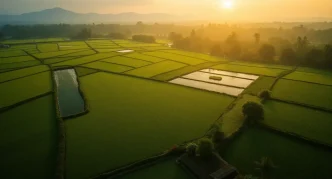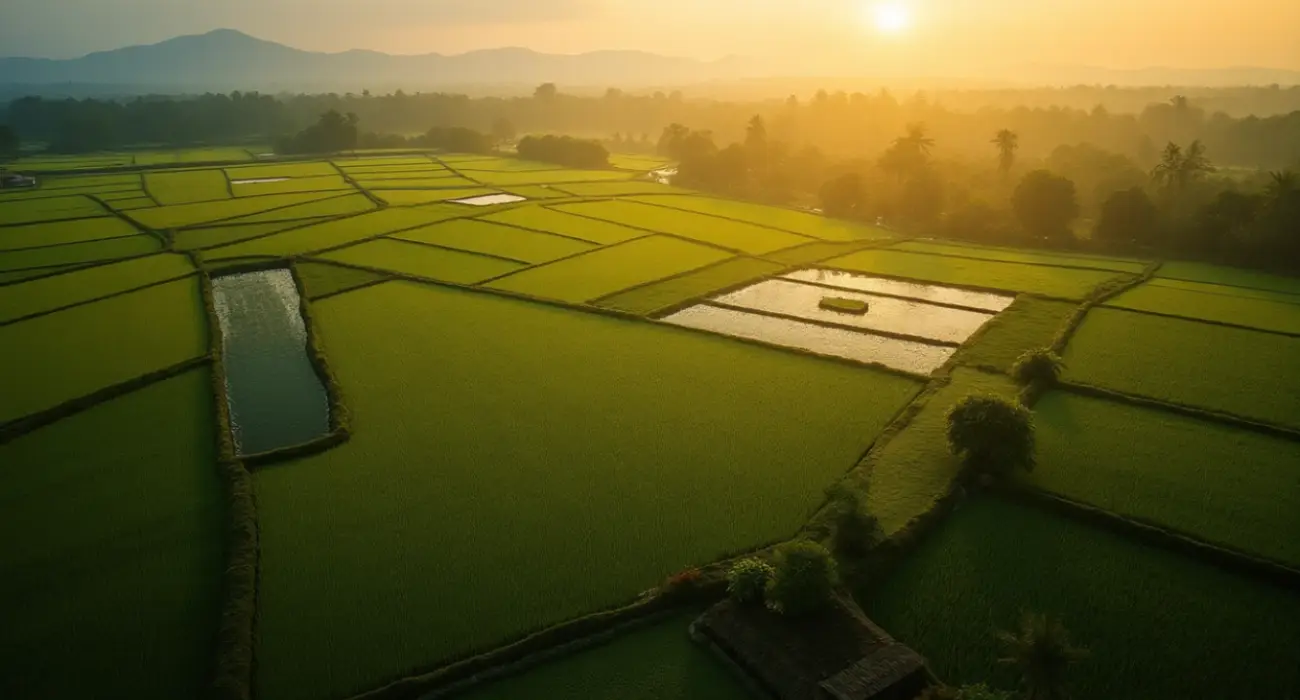In the rice-growing heartland of Kedah, Malaysia, farmers are grappling with an unusually harsh hot season and a critical shortage of machinery as they attempt to kick off the first planting cycle of 2025. With the traditional planting window already delayed by months, the challenges of unpredictable weather and limited resources are threatening livelihoods and raising concerns about the region’s padi production.
Delayed Planting Amid Harsh Conditions
The planting season for padi, or rice, in Kedah typically begins in mid-April and extends through August. However, this year, the majority of farmers find themselves stuck in the seedling or early tillering stages well into mid-June. The primary culprit is an extended hot spell that has disrupted soil preparation and water management, making it nearly impossible to adhere to the usual agricultural calendar.
Wan Maharuddin Sulaiman, a 68-year-old farmer from Pokok Sena with over two decades of experience, described the situation as among the worst he has witnessed. “It is harder for us to stick to the usual planting schedule, as the hot season and unpredictable rainfall have disrupted soil preparation and water management” he said. He added that reliance on rainfall is no longer viable for many, and access to proper irrigation remains out of reach. “The fields should already be lush and green by now but due to the dry conditions, we cannot even begin preparations” he lamented.
The broader implications of these delays are significant. Kedah, often referred to as Malaysia’s “rice bowl,” plays a crucial role in the nation’s food security. Any disruption to its planting cycles could ripple through supply chains, potentially impacting rice availability and prices in the coming months. While official data on the expected yield loss for 2025 is not yet available, farmers on the ground are visibly worried about the cumulative effects of these adverse conditions.
Machinery Shortages Compound the Crisis
Beyond the weather, a more immediate and tangible problem looms: a severe lack of farm machinery. For many small-scale farmers in Kedah, owning equipment like tractors or water pumps is a financial impossibility. Instead, they rely on shared or borrowed machinery, leading to significant bottlenecks during peak planting periods.
Abdul Rahman Mohamad, a 75-year-old farmer from Pendang, highlighted the frustration of waiting for access to equipment. “The poorer farmers who don’t have their own equipment are forced to wait their turn. This causes more delays to the planting schedule” he said. He painted a stark picture of over 50 farmers in a single area sharing just one or two tractors, a scenario he believes is replicated across the region. “Not every farmer can afford to buy new machinery, so we borrow from others” he explained.
The machinery shortage is not a new issue, but its impact has been amplified this year by the compressed timeline caused by weather delays. Abdul Rahman called on authorities to step in with additional equipment and subsidized water pumps to alleviate the burden. “If the government can send more equipment, it would help us a lot” he urged. Such interventions, he believes, could make a critical difference in getting the planting season back on track.
Water Supply: A Mixed Picture
While machinery remains a pressing concern, water supply for the first planting season appears to be less of an issue—at least for now. The southwest monsoon has brought sufficient rainfall to support most farms, according to Datuk Dr Ismail Salleh, chairman of the Muda Agricultural Development Authority (Mada), the body overseeing agricultural development in the region. “There is no concern about water supply for the first planting season” he assured.
However, Dr Salleh acknowledged that not all areas are equally fortunate. Farms located in hilly terrain or far from primary water sources continue to face challenges in accessing adequate water for irrigation. To address this, Mada plans to deploy water pumps to affected areas as part of broader efforts to improve infrastructure and boost padi yields. “We are restructuring the padi industry with comprehensive reforms to improve quality, pricing, and production” he added, signaling a long-term commitment to modernizing the sector.
Yet, for farmers like Wan Maharuddin and Abdul Rahman, these promises of reform and infrastructure upgrades offer little immediate relief. The reality on the ground remains one of struggle, as they navigate both environmental and systemic hurdles with limited resources at their disposal.
Broader Economic and Policy Implications
The challenges faced by Kedah’s farmers are emblematic of broader issues within Malaysia’s agricultural sector. Smallholder farmers, who form the backbone of padi production, often lack the capital to invest in modern equipment or resilient irrigation systems. This vulnerability is exacerbated by climate change, which has made weather patterns increasingly erratic across Southeast Asia. Rising temperatures and shifting monsoon cycles are no longer anomalies but recurring threats that demand adaptive strategies.
Economically, the delays in Kedah could have a domino effect. Rice is a staple in Malaysia, and any shortfall in domestic production may necessitate increased imports, potentially driving up costs for consumers. According to historical data from the Department of Statistics Malaysia, rice prices have already seen fluctuations in recent years due to supply chain disruptions and global market dynamics. A poor harvest in Kedah could add further pressure, particularly on low-income households for whom rice constitutes a significant portion of daily expenses.
From a policy perspective, the situation underscores the need for targeted interventions. Subsidies for machinery and irrigation equipment, as suggested by farmers like Abdul Rahman, could provide immediate relief. Additionally, investments in climate-resilient farming techniques—such as drought-resistant rice varieties or improved water management systems—could help mitigate the impact of future hot spells. While Mada’s commitment to reforms is a step in the right direction, the pace and scope of implementation will be critical in determining their effectiveness.
Moreover, the machinery shortage highlights a structural issue in agricultural support systems. Unlike larger commercial farms, smallholders in Kedah often operate on razor-thin margins, making it difficult to absorb unexpected costs or delays. Government programs to facilitate equipment sharing or provide low-cost leasing options could bridge this gap, ensuring that all farmers have equitable access to the tools they need during critical planting windows.
Looking Ahead: Challenges and Hope
As Kedah’s farmers push forward with their delayed planting season, the road ahead remains uncertain. The hot season shows no immediate signs of abating, and the machinery shortage continues to hinder progress. For many, the hope lies in timely government assistance and the possibility of favorable weather in the coming weeks to salvage what remains of the cycle.
At a community level, the resilience of farmers like Wan Maharuddin and Abdul Rahman is a testament to their determination. Despite decades of challenges, they persist in cultivating the land that sustains not just their families but the nation. Yet, their stories also serve as a reminder of the urgent need for systemic support to protect Malaysia’s agricultural heritage and ensure food security in an era of climate uncertainty.
As the planting season unfolds, questions linger about how Kedah’s rice fields will fare—and whether the promised reforms will arrive in time to make a difference for those who need them most.
















